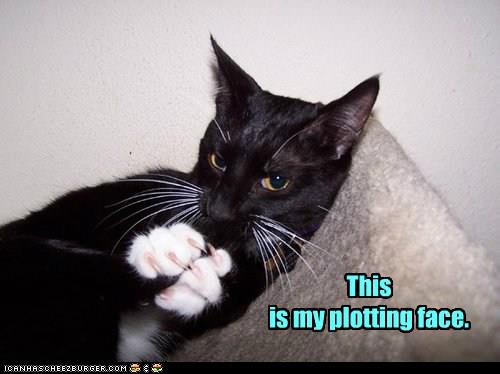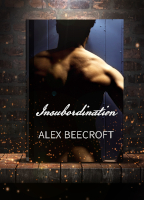Write On, To Plot or to Pant?
I should have put this in last week’s post, since it’s part of the whole plotting thing, but as usual for me, I don’t have a lot to say about it, so it can slip in here with no problem.
Writers appear to be divided between those who like to make a plan of their plot so that they know what is going to happen next in every scene from the beginning to the end (aka plotters) and those who find that if they know what’s going to happen next at all, they lose all interest in actually writing it. (Aka pantsers from ‘flying by the seat of their pants’.)
My position is that there’s nothing wrong with either method, but that you should experiment with both to find out which one suits you best, and then use that.
I started off as a pantser, which at the time was the only way I knew of to do it. Not knowing what was coming next lead to an awful lot of time spent staring out of the window waiting for inspiration to strike. It also lead to an awful lot of time spent blocked while I had apparently written myself into a corner and simply could not imagine how my characters were going to get out of their perilous situation or tight spot. Eventually the answer would come, but it was disheartening and anxious waiting for it, unable to count on it, thinking that the entire thing might have to end up in the bin.
So, when I heard of the revolutionary idea of figuring out what to write before you actually wrote it, I thought I’d give it a try. The book I heard this from was one of those formidable ‘structure’ books, which lays out how a plot should go as if it was a military exercise, along with charts and graphs of where exactly the pivot points and beats of maximum tension, bullet point lists of character flaws and motivations etc etc. That was way too organised for me.
Interestingly I recently read a book which read as though it had been written in absolute accord with this technical manual. That was Where the Shadows Lie by Michael Ridpath. I found it absolutely competent, interesting enough, and completely soulless, which is tragic when the story’s premise is so fantastic.
Anyway, I think that book proves that you can pay too much attention to the dictates of mechanical plotting. I suspect that most people will find that somewhere between the extremes of ‘make it all up as I go along’ and ‘mapped out to the slightest comma’ there is a happy medium that suits them.
For my part, I like to know what I’m going to be writing next. If we define a ‘scene’ as ‘the minimum amount of writing necessary for you to make one interesting thing happen’, then I plot by scene. The first thing you need to do, to be able to do this, is to figure out about how many words it generally takes you to describe one important happening in your story. It’ll have to be an average, obviously, because sometimes you can do it in two words (“he died,” for example) and sometimes it takes ten thousand.
My average tends to be 2000-2500 words per scene. Knowing that allows me to roughly estimate right from the start how many scenes I’m going to need to fill a book of a specific length. If I’m writing a short 20-25K novella, I need to think up 10 interesting things to happen (aka scenes). If I’m writing a 100K novel, I need to make a list of 40-50 scenes.
I still consider myself to be a fairly mild example of the plotter. I don’t make graphs and character sheets and timelines and floorplans etc as some people do. I just make a list of things that need to happen to get from the beginning to the end. I eventually end up with a plot plan which has no more than a short paragraph describing each scene.
Knowing how many things you have to think up to happen actually helps you think them up, in my experience. And not starting to write until you have an appropriate number of interesting things to write about has for me many additional benefits: I am excited about what I have to write that day, as opposed to unsure that anything will come to me at all. I know how far along in the story I am, so when I’m in the long grind of the middle, I can tick off a scene a day and have the reassurance that I’m a measurable distance closer to the end.
I wouldn’t go back to writing without a plan now – I wouldn’t know where to start or how to continue, at least without wasting at least half of my writing time on each occasion on sitting and thinking stuff up time.
I think that people worry that a plan will shut down their creativity and will shut them into a rigid box with no space for those wonderful moments of inspiration which are the delight of making art. But in my experience that’s not how it goes. I’ll be writing along, sticking to the plan, and then I’ll think “OMG! What if he suddenly decided to retrain as a ninja?”
This will indeed throw a big wrench into my drawing room comedy about a bunch of layabout gentlemen who do nothing but behave like PG Wodehouse’s Drones Club. But if I think it’s an awesome enough idea, and will improve everything out of recognition, there’s absolutely nothing stopping me from altering the plan. And given that the plan is just a list of short paragraphs, there’s not all that much work in changing it completely. Then you just write to the new plan instead. Simple.
But as I said above, if even this is enough to stultify your creative juices, there’s no need to do it at all. As long as you’ve tried both plotting and pantsing, and know for sure which one works for you, there’s no law that says you have to do either.

